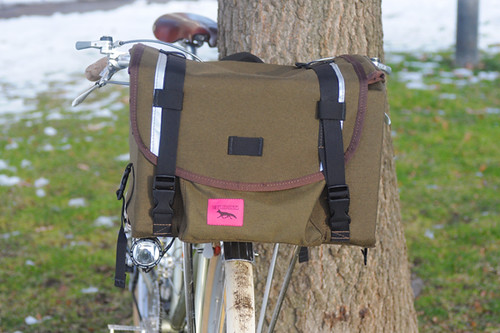
I am trying out a Swift Industries Polaris Porteur Bag - a front bag designed specifically to fit on porteur style racks, such as those from Velo Orange and Soma. Handmade in the USA, this is a very large, "everything but the kitchen sink" kind of bag that's surprisingly stable, requiring nothing but the rack for support.I am using it on an upright bicycle with low trail geometry.
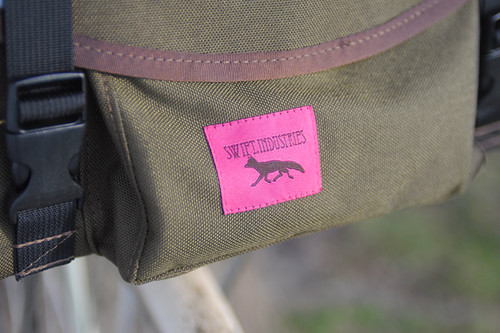
Founded in , Swift Industries is a 2-person shop in Seattle. Frequentbike travelersMartina and Jason started out making custom touring panniers, eventually expanding into saddlebags, handlebar bags and city bags. Today they have streamlined their process so that standard models can be customised with a selection of colours and features.
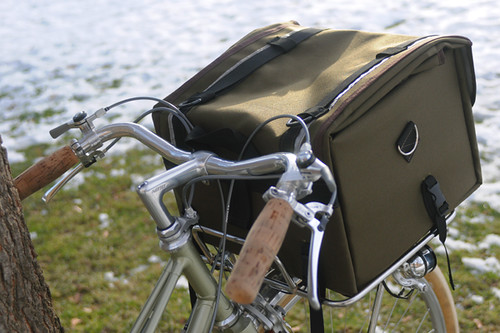
The $230 price tag of the Polaris includes choosing the colour of the fabric, trim, stitching, and reflective strips. Being the boring customer that I am, I chose an all-olive canvas with brown trim, brown stitching, and silver reflective strips. I opted to forgo the optional clear map case.
The boxy22"x14.5"x12" bag attaches to the Porteur rack at 5 points: Two sets of adjustable straps with buckle closures secure to the rear of the rack's platform, two more secure to the sides of the platform toward the front, and an additional velcro strap secures to the rack's "tombstone" at the rear (this last attachment is not shown in the picture).

Initially I was somewhat skeptical about the attachment system. I doubted that such a large bag would be sufficiently stable with only the lower support, and I thought the bag might be time-consuming to attach and detach. But I was glad to be proven wrong on both accounts. The bag contains some very effective stiffeners inside, and combined with the adjustable straps, this keeps it entirely free of either side to side, or fore and aft sway. The straps and buckles are fairly easy to manage, taking no more than 30 seconds in total to attach and less than that to detach.
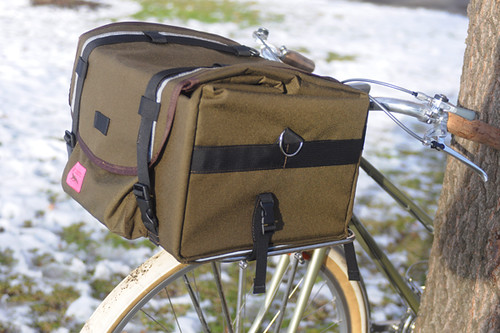
The bag features a cordura exterior, with a waterproof vinyl interior. At the front is a zippered front pocket and a headlight mount. D-rings are added to the sides for an optional shoulder strap. For those who do not wish to attach a strap, a short carrying handle is attached at the rear. On the left side is an external U-lock holster that fits a standard sized lock snugly and securely.The flap, featuring reflective strips and expandable straps with buckle closures, opens away from the rider.
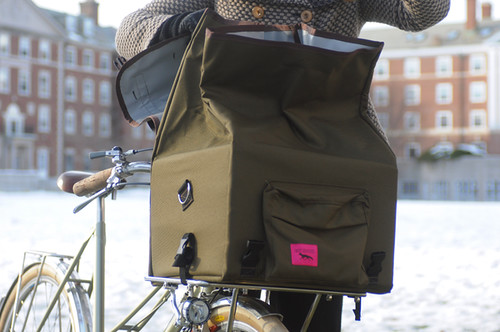
Both functionally and aesthetically, the design of the Polaris strikes me as a messenger bag that has been converted for porteur carry. The main compartment is immensely expandable. The spacious interior is free of dividers - you just pile things in. There are internal pockets handy for carrying tools and spare tubes.
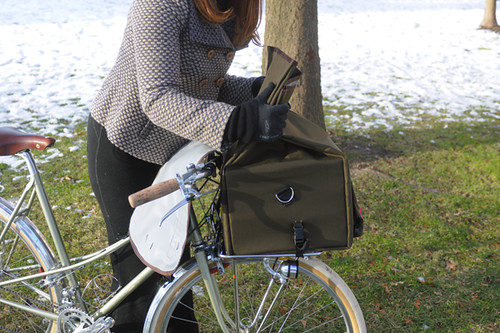
Given the size and design of the Polaris, it is not feasible to retrieve objects form the bag while cycling. Opening and closing it are multi-step processes. And once expanded, the height of the open bag might block the rider's view on the bike.

Depending on the rider's size, it may not even be feasible to retrieve things from the bag while remaining standing over the bike - the reach to the buckles at the front is fairly dramatic. In short, the Polaris is not designed for easy
en route access; it is assumed the rider will access the bag once they reach their destination.
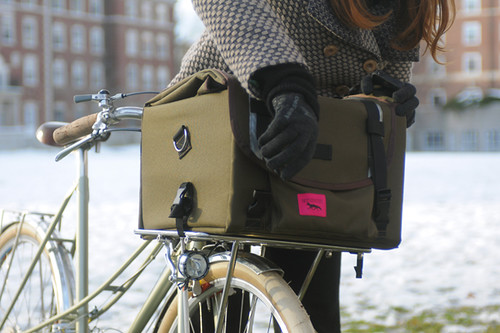 A number of things impress me about the Swift Polaris Porteur bag. The quality is top notch, and the bag has a "production" rather than a DIY look and feel to it; it is apparent that they have made a number of these already and have the process down pat. The waterproofing is well thought out: Not only is the interior vinyl, but the roll top prevents water from coming in from the sides. And, perhaps most importantly, the attachment system really works to keep the bag stable. I have tried much smaller bags that have swayed without additional decalleur support, but the Polaris feels glued in place.
A number of things impress me about the Swift Polaris Porteur bag. The quality is top notch, and the bag has a "production" rather than a DIY look and feel to it; it is apparent that they have made a number of these already and have the process down pat. The waterproofing is well thought out: Not only is the interior vinyl, but the roll top prevents water from coming in from the sides. And, perhaps most importantly, the attachment system really works to keep the bag stable. I have tried much smaller bags that have swayed without additional decalleur support, but the Polaris feels glued in place.
The large size and the messenger-style design of the Polaris offer the freedom to carry a great deal of stuff on the bike in an enclosed, sturdy, waterproof, expandable container. Those who routinely travel with technical equipment, piles of books, and the like, will find the Polaris very handy. Those seeking a more compact bag for commuting, or an easy-access randonneuring bag, will probably want to look elsewhere. I should also mention that I find the shape of the bag slightly awkward for off the bike carry, but not overwhelmingly so. All that said, Swift Industries does take custom orders and can make alternative versions of this bag to fit a customer's needs. They also make front bags for Cetma racks, Gilman front bags for the Brompton, and Ozette rando bags, as well as a variety of panniers and saddlebags. Overall, some great products for a variety of uses.
---
POST SCRIPT: Q&A
I've received a number of questions about this bag over email. Rather than try to incorporate the info into the text retrospectively, Ipost the answers below:
Q: Is there a way to attach a cable lock?
A: This is how I am carrying mine. It does shift around a bit, but not enough to affect handling. Fine for city use, though might start to drive you nuts long distance.
Q: What size U-lock will fit into the holster?
A: I am not well-versed on U-lock sizing. A typical, standard one should fit, such as this one from Kryptonite.
Q: Will this bag fit a laptop?
A: My 13" Macbook air, inside its padded carrier, fits, but you won't be able to go any wider.
Q: Will this bag work with drop bars?
A: I have 42mm width drop bars on my roadbike. Just tried to fit the Polaris in between them. It's a tight squeeze that would render most hand positions unusable.
Q: Do the straps interfere with any of the rack's light mounts?
A: The straps do not interfere with any part ofthe VO Porteur rack. I have no experience with the Soma Porteur rack.
Q: Is there any way to tuck in the dangling straps?
A: I don't think so. But while aesthetically not great, they are nowhere near the front wheel, so perfectly safe.
Q: How much weight is this bag rated for?
A: It's your rack and bike that will be the limiting factors, rather than the bag. Be careful carrying a lot of weight on your bike unless it is designed to do so and made of appropriately robust, touring+ grade tubing. As VO puts it: "Parisian delivery bikes were reputed to carry as much as 110lbs of newspapers on similar racks, but of course they had strengthened bike frames and forks, not only racks."


 Officers elected were
Officers elected were















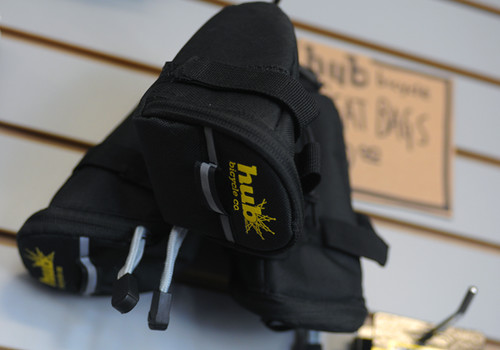
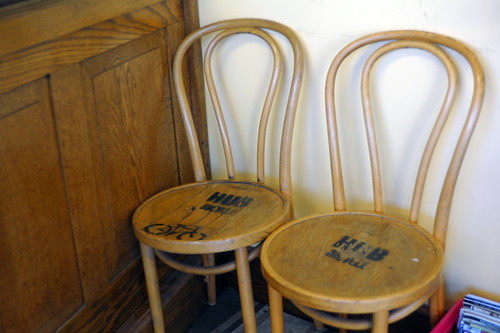

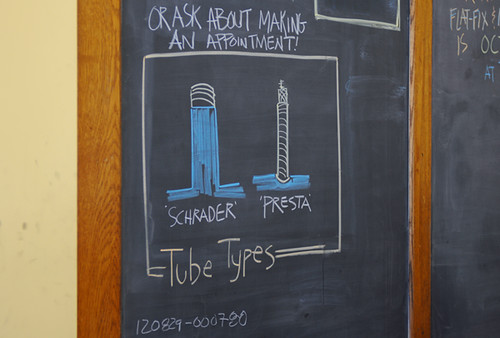
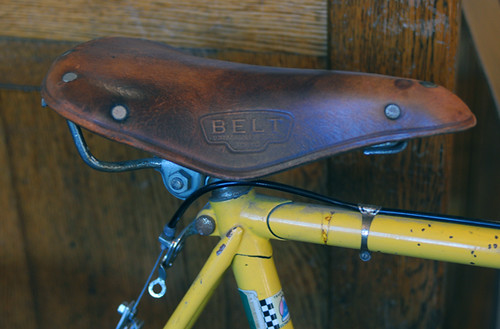
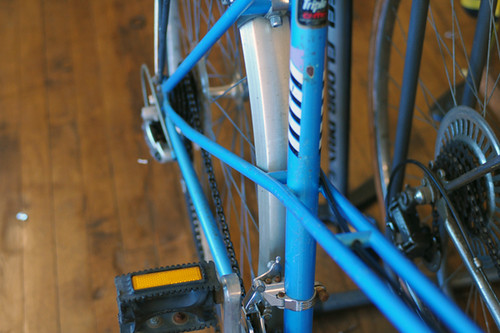

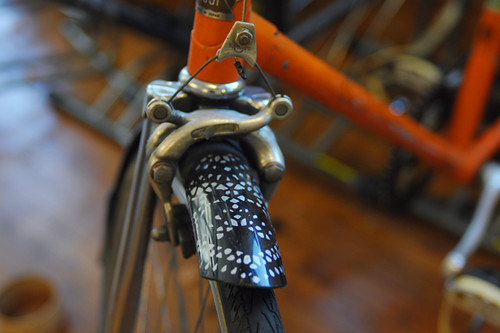

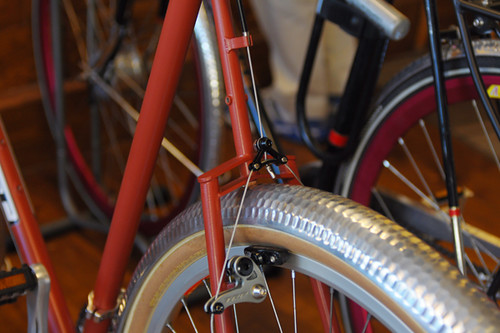
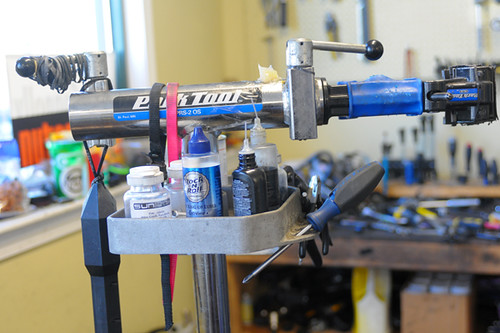
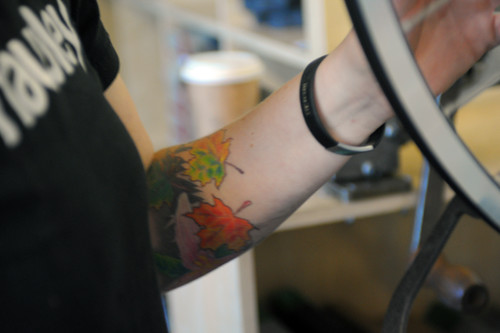
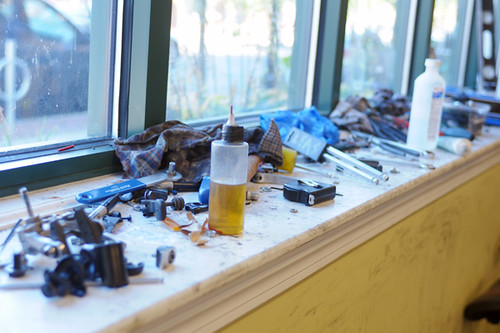
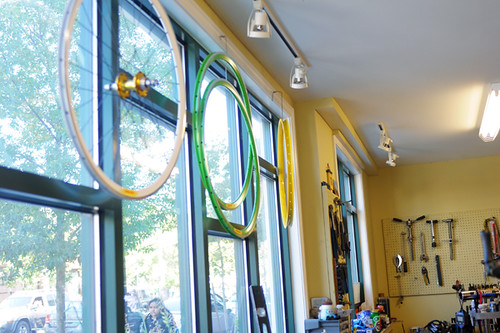


 The lack of wind made for extremely calm waters, perfectly reflecting the blue sky. This is where Turnagain Arm joins the Cook Inlet, south of Anchorage. What may look like clouds where the water meets the sky are actually the snow-capped mountains on the far western shore of Cook Inlet!
The lack of wind made for extremely calm waters, perfectly reflecting the blue sky. This is where Turnagain Arm joins the Cook Inlet, south of Anchorage. What may look like clouds where the water meets the sky are actually the snow-capped mountains on the far western shore of Cook Inlet! After weighing my options, I decided to head for Haines on the north end of the Inside Passage. From Anchorage, I took Highway 1 (also known as the Glenn Highway) east towards Glennallen, a distance of about 190 miles. This is the same route that Sue and Fred took on Tuesday (the 17th).
After weighing my options, I decided to head for Haines on the north end of the Inside Passage. From Anchorage, I took Highway 1 (also known as the Glenn Highway) east towards Glennallen, a distance of about 190 miles. This is the same route that Sue and Fred took on Tuesday (the 17th). For much of the way, mountains rise on either side of the Glenn Highway. This is the Matanuska River Valley, formed many, many years ago by a glacier of the same name, which, at one time, extended all the way to Palmer (about 100 miles west).
For much of the way, mountains rise on either side of the Glenn Highway. This is the Matanuska River Valley, formed many, many years ago by a glacier of the same name, which, at one time, extended all the way to Palmer (about 100 miles west). Merely a “shadow of its former self” the Matanuska Glacier still exists and is still changing the landscape. The glacier is 27 miles long and it averages 2 miles in width. The “face” of the glacier, what I'd call its “front” and is technically called its terminus, is 4 miles wide! It's one huge chunk of ice!
Merely a “shadow of its former self” the Matanuska Glacier still exists and is still changing the landscape. The glacier is 27 miles long and it averages 2 miles in width. The “face” of the glacier, what I'd call its “front” and is technically called its terminus, is 4 miles wide! It's one huge chunk of ice!



 Great Sand Dunes National Park & Preserve.
Great Sand Dunes National Park & Preserve.













